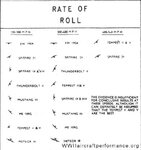The roll rate of the 109 is said to not compare too well to other fighters of similar weight and dimensions such as the La-7 or Yak-3. Even the Spitfire with its much larger wing outrolls the 109 in many flight regimes.
The cause of this is apparently that the 109 wing (from the F-version onwards) has a relatively large tip so that the aileron does not extend to end of the wing.
I think it would have been possible to rectify this flaw by extending the aileron further as seen in the sketch.
What do you think?
Pardon the amateurish sketch.

The cause of this is apparently that the 109 wing (from the F-version onwards) has a relatively large tip so that the aileron does not extend to end of the wing.
I think it would have been possible to rectify this flaw by extending the aileron further as seen in the sketch.
What do you think?
Pardon the amateurish sketch.

